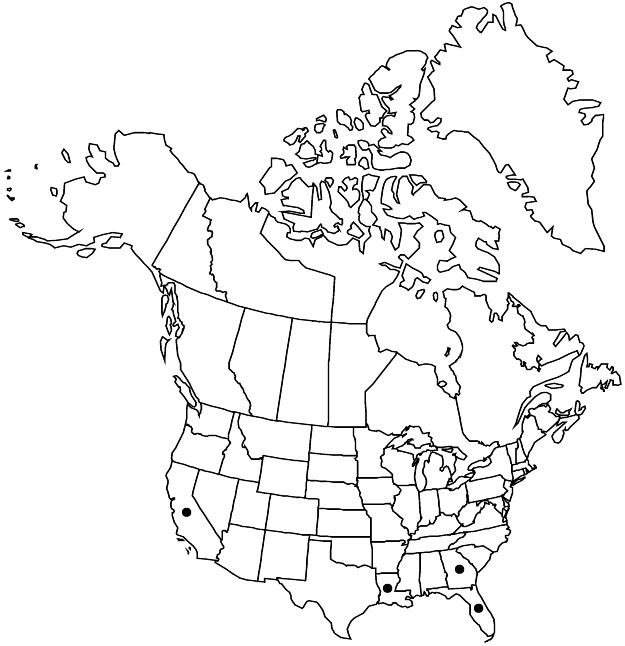Pyracantha atalantioides
Bot. Mag. 151: sub plate 9099. 1926.
Plants: crowns spreading or partially reclining, 10–60 dm. Stems: thorns abundant; young twigs yellowish brown-hairy, glabrescent. Leaves: stipules 3–7 mm; petiole 2–6 mm; blade elliptic, oblong, or oblong-obovate, 1.5–5 × 1–2 cm, base rounded to cuneate, margins entire or remotely serrulate distally (on vigorous shoots), apex obtuse, apiculate, or aristate, surfaces yellowish brown-hairy, glabrescent (abaxial becoming slightly glaucescent). Inflorescences 3–4 cm diam. Pedicels 5–10 mm, yellowish brown-hairy. Flowers 8–10 mm diam.; hypanthium hairy; calyx brown- or yellowish brown-puberulent when young, glabrescent, sepals broadly elliptic or triangular, 1–1.5 mm, apex obtuse; petals ovate, 4–5 mm, apex slightly apiculate. Pomes bright red, 4–7 mm diam.; pedicels 5–12 mm.
Phenology: Flowering Feb–May; fruiting Oct–Jan.
Habitat: Roadsides, thickets, disturbed ground, edges
Elevation: 0–300 m
Distribution

Introduced; Calif., Fla., Ga., La., Asia (China).
Discussion
Pyracantha atalantioides is native to southeastern and western China. The species has been extensively planted in North America; it is apparently naturalized only sporadically in milder climatic areas of the continent.
Selected References
None.